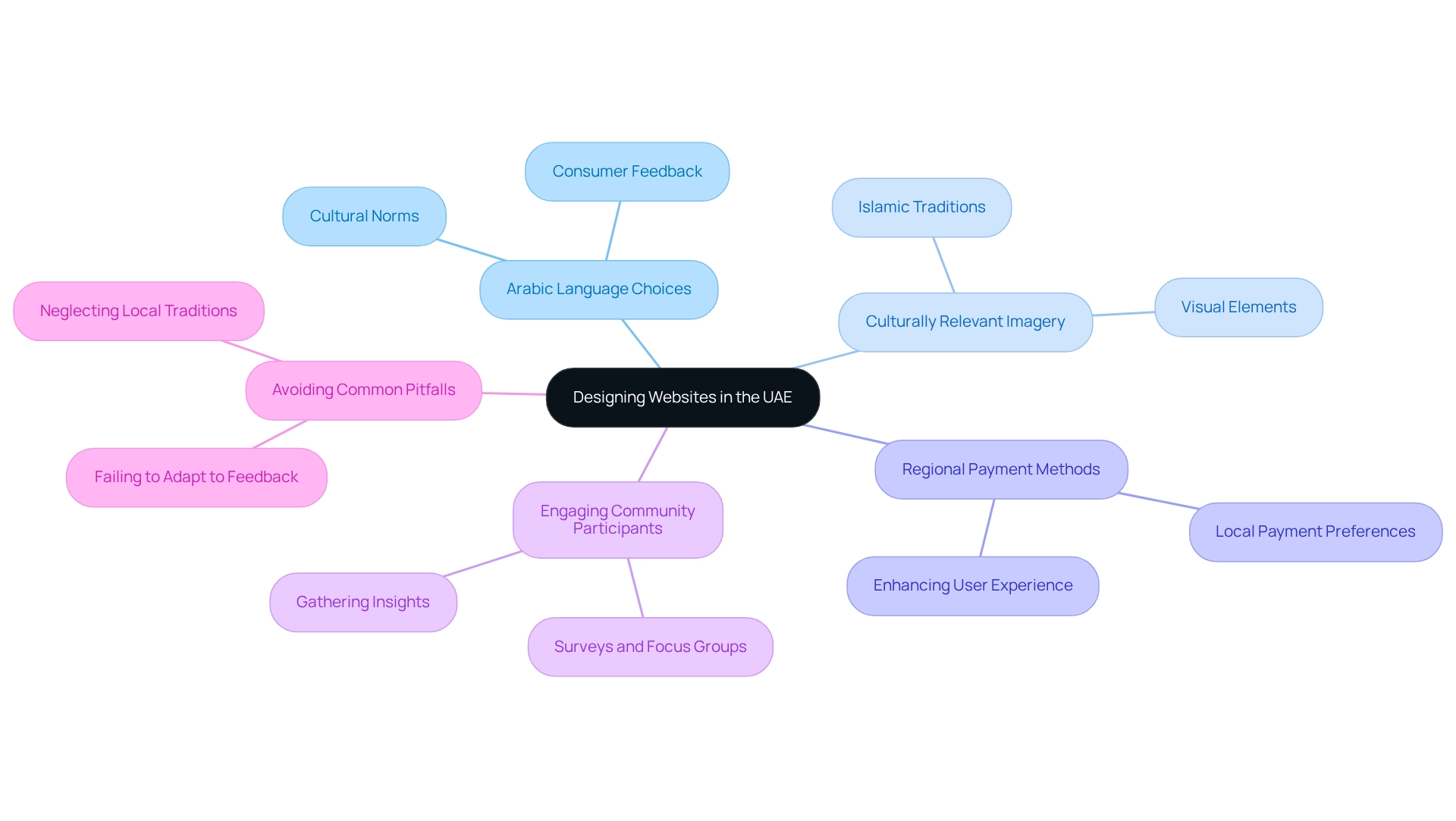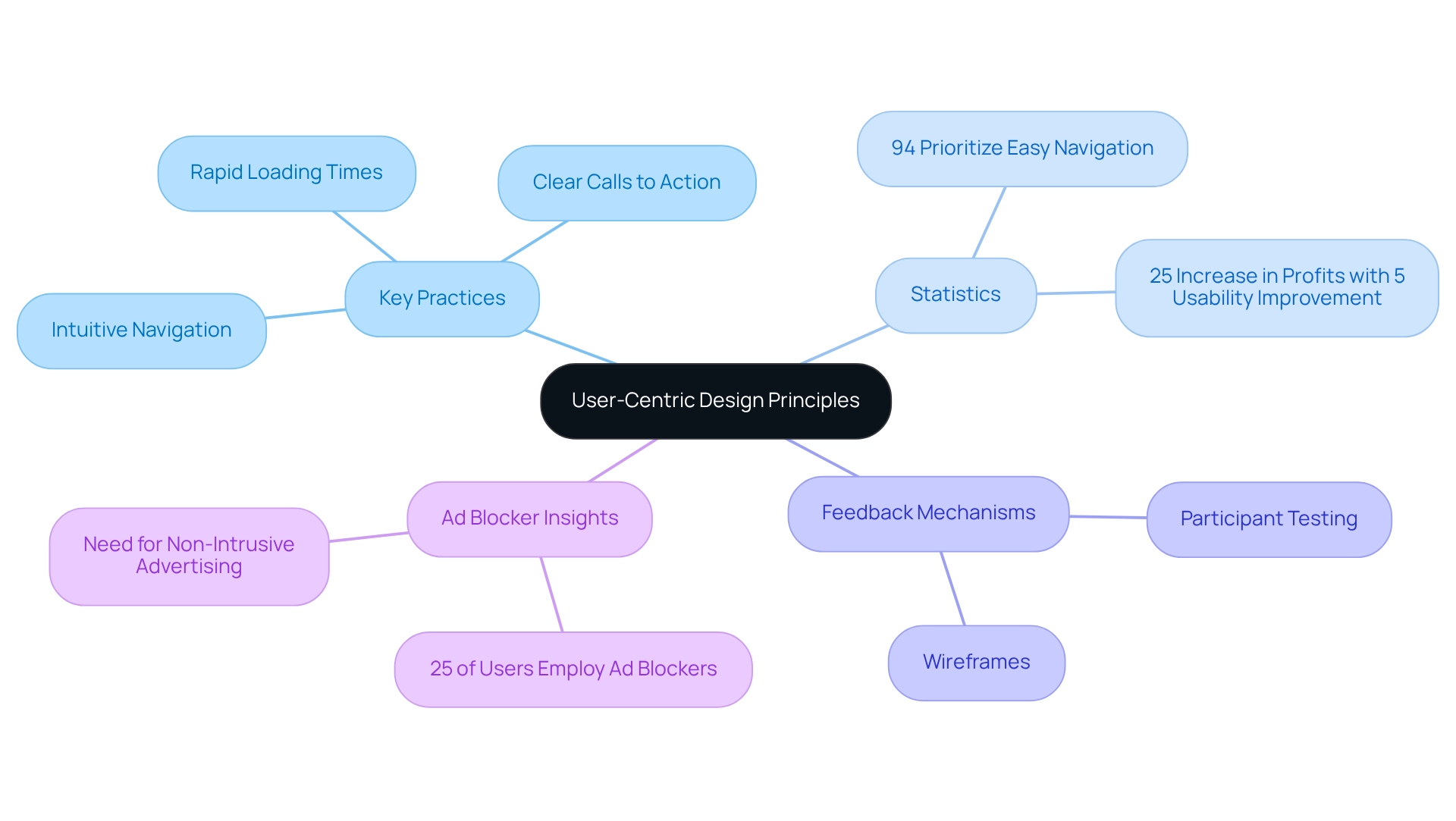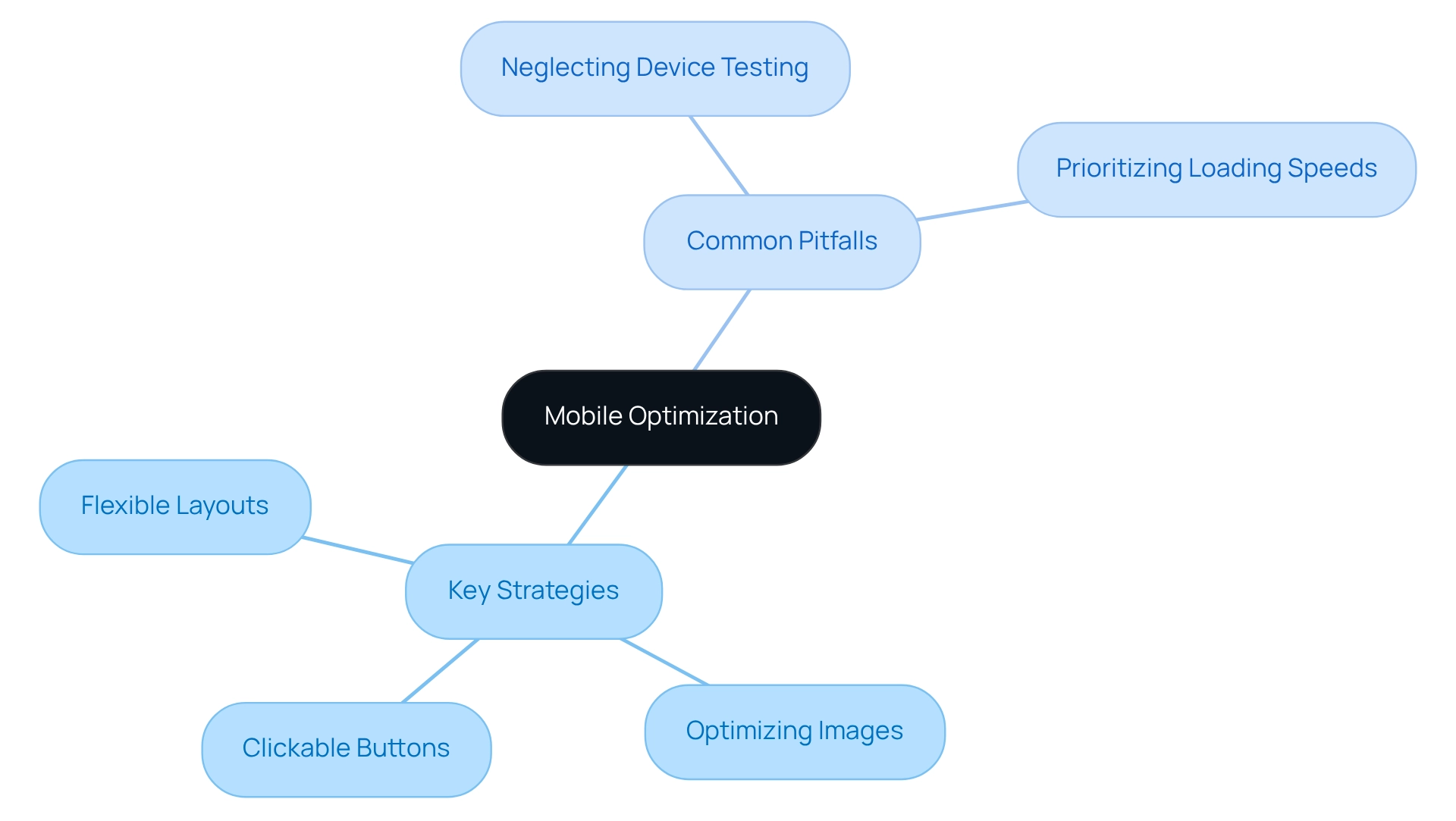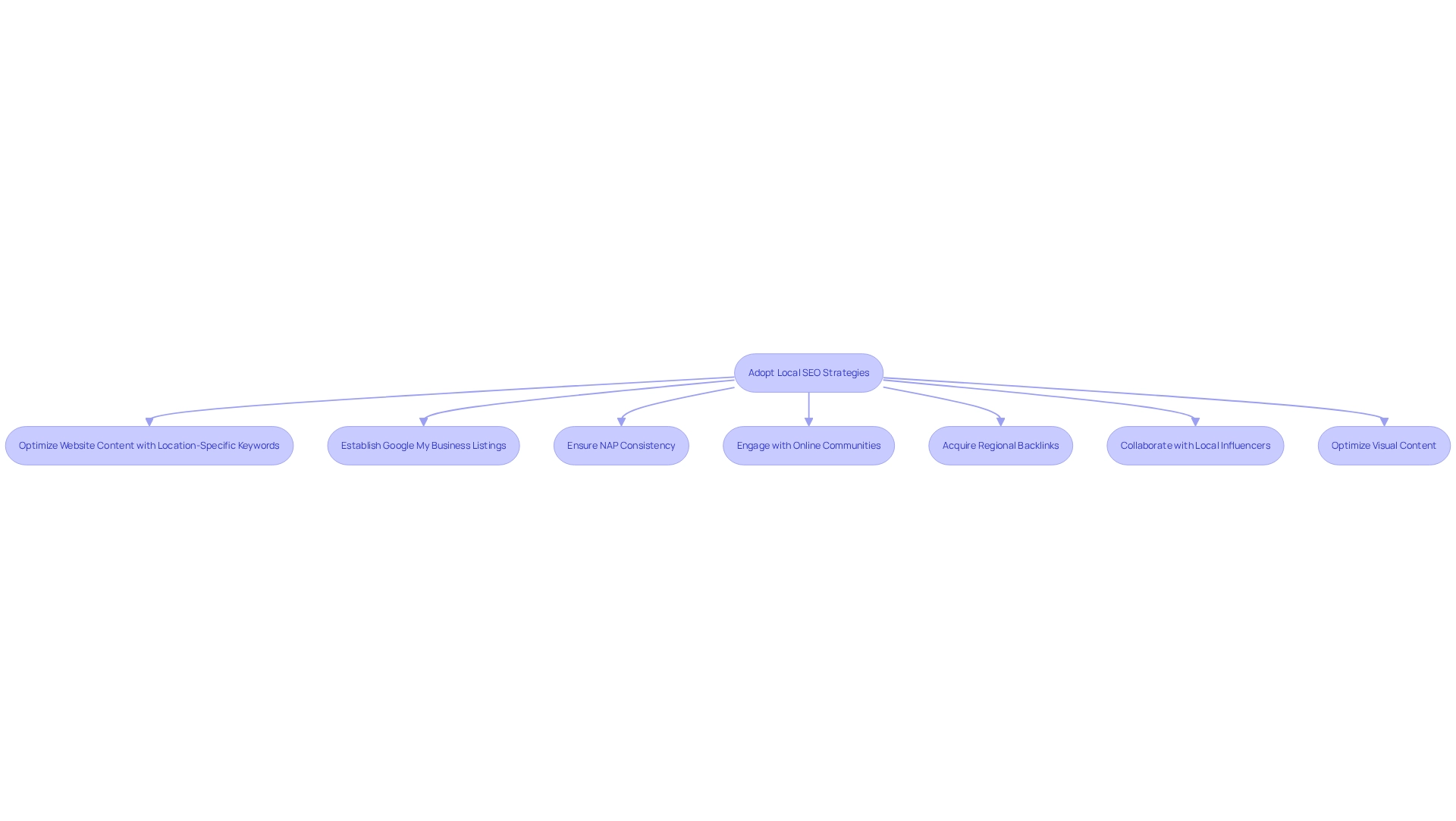Sustainable Branding Practices
Best Practices for Designing Websites in the UAE: Key Strategies
Overview
Best practices for designing websites in the UAE revolve around:
- A profound understanding of local culture
- The implementation of user-centric design principles
- Optimization for mobile devices
- The adoption of local SEO strategies
These strategies are not merely suggestions; they are essential for creating websites that engage and resonate with the target audience. By enhancing user experience and improving online visibility, businesses can thrive in a competitive digital landscape. It is imperative for Brand Managers to recognize the significance of these elements in establishing a strong online presence.
Introduction
In the vibrant digital landscape of the UAE, crafting websites that resonate with local users transcends mere task execution; it is an art form that demands a nuanced understanding of culture and preferences. As businesses endeavor to captivate a tech-savvy audience, the significance of the following elements becomes paramount:
- Cultural relevance
- User-centric design
- Mobile optimization
- Local SEO strategies
This article explores essential tactics that empower brands to forge meaningful connections with their audience, enhance user experience, and ultimately drive growth in a competitive market. By leveraging local customs and implementing effective design principles, the journey toward a successful online presence in the UAE is replete with opportunities ready for exploration.
Understand Local Culture and User Preferences
To create successful websites in the UAE, it is essential to follow the best practices for designing websites in the UAE, which include a deep understanding of regional culture and audience preferences. This begins with comprehensive research into cultural norms, values, and aesthetics that resonate with the target audience.
Key strategies that align with the best practices for designing websites in the UAE include:
- Incorporating Arabic language choices
- Employing culturally relevant imagery
- Offering regional payment methods to enhance user experience
Furthermore, recognizing the significance of Islamic traditions and holidays can inform design decisions, influencing aspects such as color schemes and visual elements. Engaging community participants through surveys or focus groups yields invaluable insights into their preferences, ensuring that the website aligns with their expectations and fosters greater engagement.
In a marketplace characterized by a robust trend toward digital engagement and marketing, prioritizing cultural relevance is paramount. As Simon Kemp, Brand Ambassador for GWI and data.ai, asserts, “To stay ahead, as marketers and business owners, keeping a sharp eye on the rapidly changing numbers and data is the key.”
By avoiding common pitfalls, such as neglecting local traditions or failing to adapt to consumer feedback, brands can follow the best practices for designing websites in the UAE to create sites that not only attract but also retain visitors in a competitive digital landscape.

Implement User-Centric Design Principles
Applying customer-focused principles is not just beneficial; it is essential for developing impactful websites that forge meaningful connections with individuals. This approach begins with thorough research on individuals, uncovering their needs, preferences, and pain points. Key practices encompass:
- Creating intuitive navigation
- Ensuring rapid loading times
- Integrating clear calls to action
Notably, 94% of individuals prioritize easy navigation, while 83% value an aesthetically pleasing website, underscoring the critical elements of user-focused development.
Research shows that even a modest 5% improvement in usability can lead to a remarkable 25% increase in profits, primarily through enhanced customer retention. This statistic highlights the financial advantages of prioritizing client needs.
Utilizing wireframes and prototypes is crucial for visualizing the client journey and identifying potential usability challenges before finalizing the layout. Moreover, establishing feedback loops through participant testing and questionnaires fosters continuous improvement based on real participant interactions. Testing by individuals is indispensable, as it provides insights into how various individuals engage with a product, ensuring that the layout meets their expectations.
In the first quarter of 2024, 25% of global internet participants employed ad blockers, signaling dissatisfaction with inadequate interactions. This statistic emphasizes the necessity for companies to adopt non-intrusive advertising strategies that enhance engagement. By focusing on customer-centric principles, businesses can incorporate best practices for designing websites in the UAE that not only attract visitors but also convert them into loyal clients. This commitment to client experience is vital in the competitive UAE market, particularly when following the best practices for designing websites in the UAE. Ultimately, investing in consumer research and development can yield long-term savings for companies by minimizing the need for costly redesigns, positioning it as a strategic imperative for success.

Optimize for Mobile Devices
In the UAE, where smartphone penetration exceeds 99%, optimizing for mobile devices is not just beneficial—it’s essential. Adopting a mobile-first design approach ensures that websites are responsive and function seamlessly across various screen sizes. Key strategies include:
- Implementing flexible layouts that adapt to different devices
- Optimizing images for quicker loading times
- Ensuring that buttons and links are easily clickable on smaller screens
Furthermore, adding mobile-specific features like click-to-call buttons and location-based services greatly improves interaction. Consistent testing on various devices and browsers is crucial to detect and address any problems, ensuring a seamless and effective experience for everyone.
As Jacob Baadsgaard, Founder and CEO of Disruptive Advertising, states, “Optimizing for local search is important, but if you aren’t optimizing for mobile, you’re going to miss out on your most important source of local traffic.”
With the social media advertising market in the UAE projected to grow at an 11% CAGR, reaching $663 million by 2029, brands must prioritize mobile optimization to effectively engage their audience and stay competitive in this dynamic landscape. Furthermore, as the number of Twitter participants in the UAE is anticipated to reach 2.73 million by 2025, comprehending and adjusting to mobile trends will be essential for improving online presence and consumer interactions.
Common pitfalls in mobile optimization include:
- Neglecting to test across various devices
- Failing to prioritize loading speeds, which can hinder user engagement and satisfaction.

Adopt Local SEO Strategies
Applying regional SEO strategies is crucial for companies aiming to enhance their online presence in the UAE. This involves optimizing website content with location-specific keywords, which can significantly improve search engine rankings. Anish Vijayan, with over 16 years of expertise in SEO, emphasizes that companies must focus on establishing and managing Google My Business listings. This strategy enables them to appear in local search results and provides potential clients with essential information, such as hours of operation and contact details. Consistency in NAP (Name, Address, Phone Number) across all platforms is vital for building trust and enhancing search performance.
Engaging with nearby online communities and acquiring regional backlinks can further boost search rankings. Collaborating with local influencers and businesses broadens reach and fosters deeper engagement with the audience. Tailoring content to resonate with community interests and cultural nuances not only enhances relevance but also cultivates stronger connections with the audience. Mindy Weinstein, founder of Market MindShift, notes that “one of the frequently neglected SEO opportunities relates to images,” highlighting the importance of optimizing visual content for regional search.
Regularly monitoring SEO performance through analytics tools is essential for pinpointing areas that require improvement and adapting strategies to meet evolving market demands. For example, the customized marketing strategy developed for Quaker Oats improved its brand positioning in a competitive market, demonstrating the effectiveness of localized approaches. By concentrating on these local SEO practices, supported by pertinent statistics on effectiveness, businesses can significantly increase their reach and engagement by implementing the best practices for designing websites in the UAE market.

Conclusion
To establish a formidable online presence in the UAE, businesses must prioritize a profound understanding of local culture and user preferences. By integrating culturally relevant elements such as language options and imagery, brands can craft websites that resonate deeply with their audience, thereby enhancing user engagement.
Implementing user-centric design principles is not just beneficial; it is crucial for developing effective websites. By prioritizing intuitive navigation, swift loading times, and clear calls to action, businesses can significantly improve customer retention and satisfaction. Continuous user feedback is essential to ensure that design choices align with user expectations, fostering loyalty in the process.
With smartphone penetration exceeding 99%, optimizing for mobile devices is imperative. Adopting a mobile-first design approach that guarantees responsive layouts and rapid loading times will attract and retain a tech-savvy audience, ensuring that brands remain competitive in this digital age.
Moreover, embracing local SEO strategies is vital for enhancing online visibility. Utilizing location-specific keywords and maintaining consistent information across platforms can elevate search engine rankings and connect businesses with local consumers effectively. Engaging with local communities through backlinks and influencer collaborations can further amplify reach and impact.
In conclusion, to thrive in the competitive UAE market, brands must wholeheartedly embrace cultural relevance, user-centric design, mobile optimization, and local SEO. These strategies not only captivate the audience but also foster lasting connections that drive growth in the ever-evolving digital landscape.
Frequently Asked Questions
What are the best practices for designing websites in the UAE?
Best practices include understanding regional culture and audience preferences, conducting comprehensive research into cultural norms, values, and aesthetics, and incorporating specific strategies such as Arabic language options, culturally relevant imagery, and regional payment methods.
Why is cultural relevance important in website design for the UAE?
Cultural relevance is crucial as it helps ensure that the website resonates with the target audience, enhances user experience, and fosters greater engagement, especially in a marketplace that values digital engagement and marketing.
How can understanding Islamic traditions impact website design?
Recognizing Islamic traditions and holidays can influence design decisions, including color schemes and visual elements, ensuring that the website aligns with cultural expectations.
What methods can be used to gather insights into audience preferences?
Engaging community participants through surveys or focus groups can provide valuable insights into their preferences, helping to tailor the website to meet their expectations.
What common pitfalls should be avoided when designing websites for the UAE?
Common pitfalls include neglecting local traditions and failing to adapt to consumer feedback, which can hinder a website’s ability to attract and retain visitors in a competitive digital landscape.



